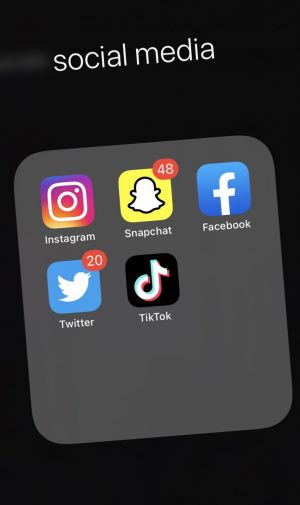Les Langues: The Tool to Wider Access al Mundo
February 10, 2023
A few years ago, my cousin moved to Switzerland. When he came home during the summer to visit my family in the United States, he came back knowing both French and German. With it being required in his school and in many schools across Europe to learn at least one language, he became multilingual. I, on the other hand, only know my two native languages: English and Spanish. His move made me realize just how behind the United States is in language education.
Learning a language should be more widely accessible in the United States and taught as early as possible. Helping with both the development of the mind and with social interaction, language education is beneficial in numerous ways.
Though language education has become more widespread in recent years, the United States is still falling behind compared to its European counterparts. According to the Pew Research Center based on a study from 2017 done by the American Councils for International Education, only 20% of students in K-12 in the United States learn a foreign language at school, while a median of 92% of students do across Europe.
One benefit of learning a foreign language is improvement in social skills. Communication skills are heavily sought out for many jobs, such as business and international relations. According to a survey done in 2019 by Forbes, knowing a foreign language greatly helped applicants get hired, with “up to 35% of those responsible for hiring or managing” proving this to be true.
Being multilingual also greatly benefits students. According to studies done in 2019, Cambridge University writes, “the majority of studies (90%) showed that language learners perform better across a range of academic subjects than students who don’t study a second language.” Through greater academic progress, students can increase their chances of being hired for a job and add being multilingual to their resume.
While there are plenty of online language apps, they are not nearly as effective compared to in-person learning. The New York Times reviewed multiple language learning apps and found that individuals are not able to communicate fluently through them. They write, “according to the CEFR model, you won’t even be halfway there.” While some also argue that learning a language is “useless”, this argument has proven to be baseless as language is used in everyday life. Personally, I enjoy taking French lessons outside of school, and it has helped me better understand the world around me.
Language education should be taught from K-12 across the United States. It has proven to be beneficial in a multitude of aspects, from social and career to everyday life. In learning another language, people gain appreciation for the cultures around them – after all, culture is everywhere, n’est pas?
Devlin, Kat. “Most European students are learning a foreign language in school while Americans lag.” Pew Research Center, 6 Aug. 2018.
Hulett, Matt. “How The Power Of Language Can Grow Your Career And Business.” Forbes, 2 July 2019.
Ravenscraft, Eric. “500 Days of Duolingo: What You Can (and Can’t) Learn From a Language App.” The New York Times, 4 May 2019.
Spence, Carley. “How learning a new language changes your brain.” Cambridge, 29 Apr. 2022.






